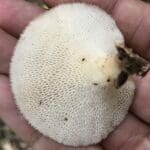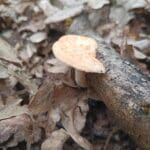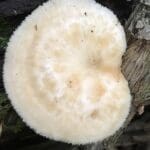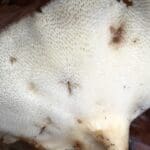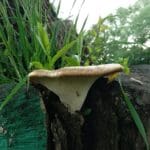Tuberous polypore / Spring / Summer / Autumn / Winter / Edible
The Tuberous Polypore (Polyporus tuberaster) is a delightful find for me. Known for its edible qualities and distinctive growth habit, this mushroom grows from an underground sclerotium—a hard, tuber-like structure that gives it its name. Found on dead or decaying hardwood, this polypore’s creamy caps and tough, fibrous stem make it stand out during foraging trips.
While its texture may not suit every palate, the Tuberous Polypore is a versatile mushroom that can be cooked in various ways, often adding a unique, earthy flavour to dishes.
In this post, we’ll explore how to identify the Tuberous Polypore, where to find it, and tips for preparing it in the kitchen.
Scientific Name
Common Name
Tuberous polypore
Family
Polyporaceae
Habitat
Saprophytic grows on fallen branches of deciduous trees, especially beech, appears in summer and autumn.
Identifying Features:
This is a med/small polypore fungus that grows directly off wood which also may be buried, usually present as a single fruiting body.
Upperside/cap
5-10 cm across,
Shape can vary a little – from rounded either as a slight or deep funnel shape or with the stem off centre making it more of a kidney or fan shape.
Cream with beige/light brown scales that are concentrically zoned (radial circles) the cap margin is often in-rolled.
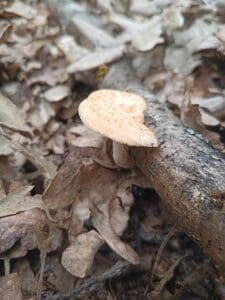
Underside
Polypore- lots of tiny holes like sponge. Cream and angular, resembling netting that has been pulled more in one direction. The pores are decurrent running down the stem. As the fungus ages the pores look more open and serrated. Tubes are 1-4mm deep.
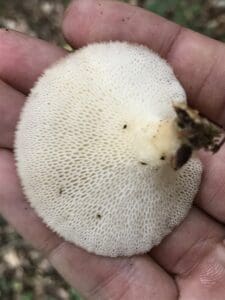
Smell:
Not distinctive or slightly mushroomy
Spores:
white
Uses:
In food:
Edible, light mushroom flavour, can be tough, best when young
Known hazards:
None known
Could Be Confused With…
Looks like a mini version of related Dryads saddle (Cerioporus squamosus) which is also edible but much bigger the scales pattern on top is darker and had a bulbous darker stem. Pictured below.
Also Black Footed Polypore (Polyporus leptocephalus) when young which has a black stem as the name suggests, much smaller pores and no scales on top.
Resources
More info here



